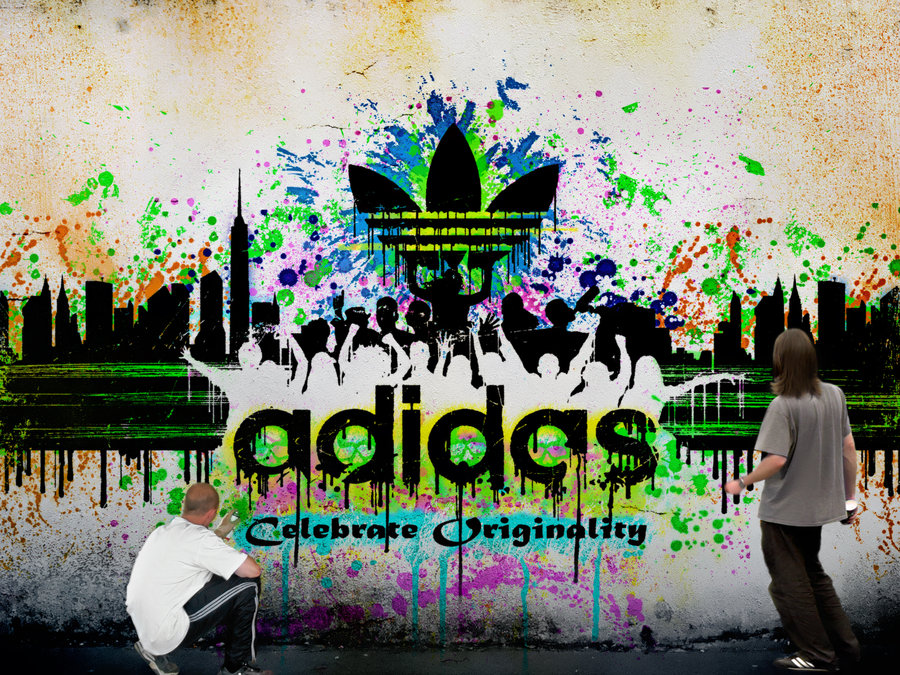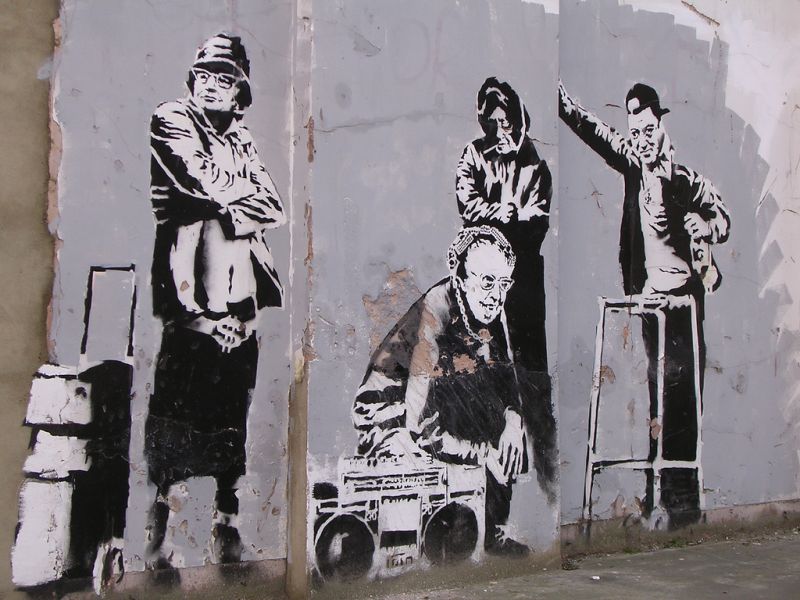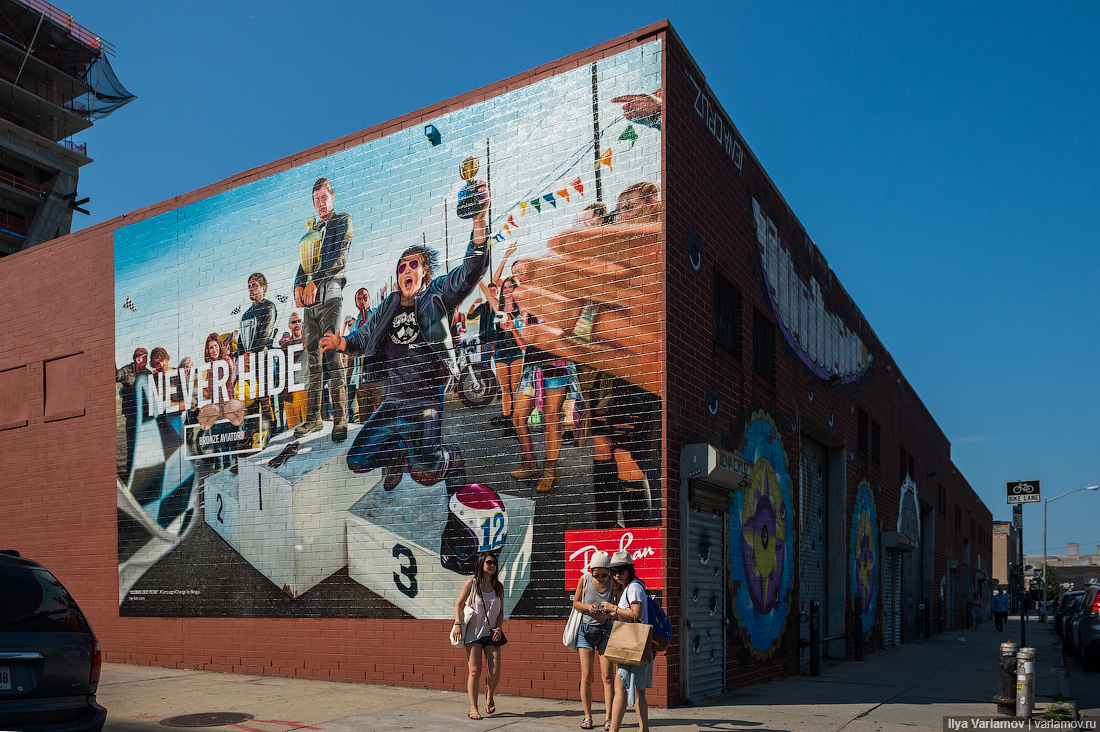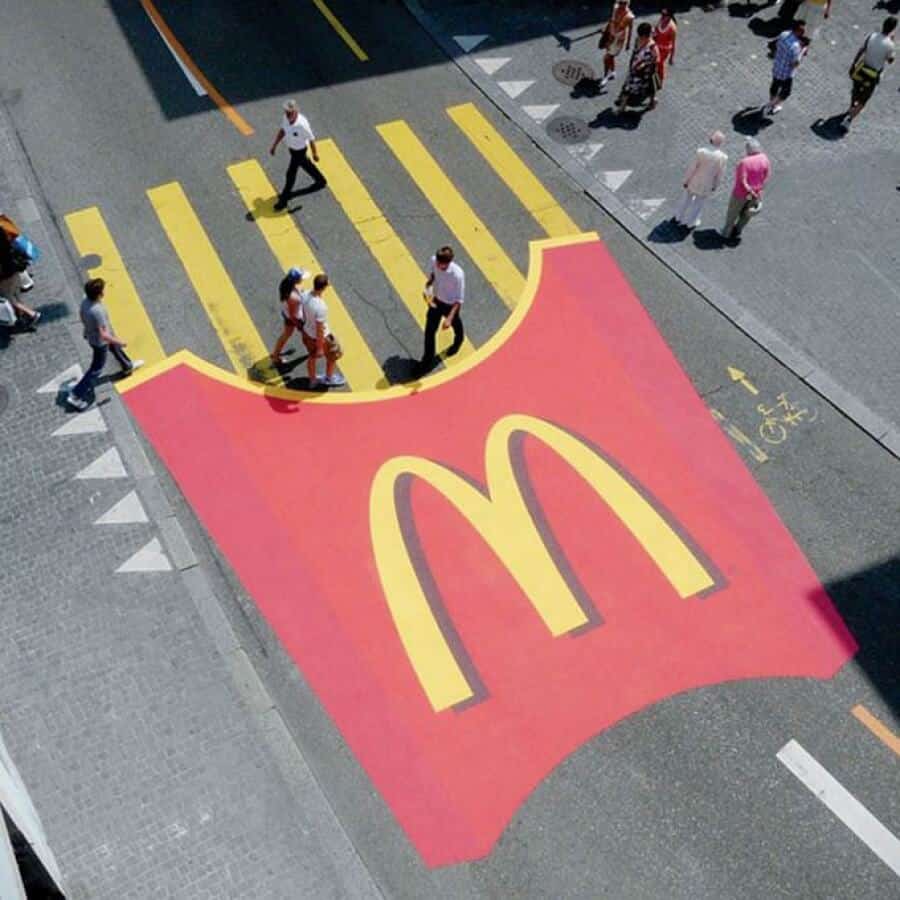Street Art has always been associated with fighting the mainstream and criticizing mass consumerism; but today, these ideas seem to be getting along pretty well. Is that a bad thing?
The connotations behind the prevalence of street art are no longer the same. Whereas, conventionally, street art has been seen as a means of communicating and expressing political and social change, or seen as a brave act of rebelliousness, world businesses and multinationals have seen in it the potential for advertising. More and more, companies like Adidas, McDonalds, and even public institutions such as law enforcement units have made use of street art to persuade people and turn them into consumers.
While there are many who believe that this is not the appropriate use for street art, and that using it for profit robs it of its original purpose, the other side believes that street art is able to elevate the commercial value of businesses and neighborhoods, changing the way in which brands permeate through public spaces and the private realms of people’s interests and preferences.
This article will take a look at the origins of street art and compare the two opposing arguments on whether marketing and street art are incompatible, or whether this relationship is mutually beneficial.

Street Art, a Cancerous Vigilante?
Modern cities, today, boast about the variety of the artworks encountered at every corner. Urban arteries are now decorated with vivid messages of expression through several forms of graffiti that scream the character of the city’s inhabitants.
In some cities, street art is completely illegal, due to the fact that it appears to be in contravention with the law when it comes to respecting property, whether the individual’s or the municipality’s. For this reason, street artists have been labeled the city’s unsolicited vigilantes: heroes for those who adhere to their ideas, and the public enemy of those who fight, day by day, to keep the urban space safe and respectable.
Popular culture has, traditionally, associated street art with criminality. The criminalization of street art promotes the idea that graffiti is a hidden means of communication between gangs. This, therefore, reproduces the idea that graffiti-filled neighborhoods are places that should be avoided, in contrast with the clean, clear and organized space that is occupied by the elite, with no “vandalism”.
Since we live in an ever-changing world, street art has seen a fair share of twists in its own journey of self-actualization. The mass popularization of street art, and portrayal as desirable as opposed to undesirable, came through documentaries such as Exit through the Gift Shop, which follows an ordinary man who, upon taking advice from the British street artist, Banksy, decides to become a street artist himself. Anyone who’s watched the movie will be left with a sort of resentment at how easy it was for the man, indeed, to earn the label of an “artist”, but will also gain deeper insight into the dynamics and hierarchies ingrained in street art itself.
Today, street art is not just political, and not even as angry as people conceive it to be. Today, street art has become an opportunity, a sign of life in an apparently lifeless city. There are festivals which celebrate, promote, and encourage street art, because people have associated the presence of street art with a perceived personality of the city, and of the very same people who inhabit it.

Buying into Street Art, a Profitable Business
Companies like Street Art Advertising have emerged to draw the bridge between street art and the commercial needs of international businesses. The idea is not to overtake the important role played by street art, but to capitalize on a space that is demarcated by the challenging relationship between art and its audience. Since street art is often interactive, demanding a level of thinking and post-reflection, advertising, which is conventionally seen as a centralized, one-directional communication, becomes a conversation between the product and the potential consumer.
What this means is that now, more than ever, people have the opportunity to interact with their favorite brands in ways that they did not have before.
The journey of branding is only beginning. What started as commercial breaks between our favorite TV shows quickly evolved to unsolicited YouTube videos, which were pervasive, intrusive and, again, unsolicited. This caused people to react negatively to the way businesses wanted to get their message across, as consumers felt overloaded with information they did not ask for.

How to transform this, and rescue the comfort in advertising?
Street Art! Street art is unsolicited, but not pervasive. A street artist does not require permission from his fellow citizens to do his work, and yet manages to present those citizens with an interesting moment of captivating interaction. As it is said, “primarily an arena for fighting commercialism and mass culture (and for some of us – still the essential aspect), street art is becoming appropriated by the market driven-elements of popular culture.”
Brands are now selling much more than their product. They sell reactions, ideas, and opinions, and they capitalize on the chance to become more human. And what better way to do this, than by interacting with humans?
So, is the marriage between street art and consumerism a long-term commitment? According to predictions, yes, we can expect to see the sphere of branding increase. This is not a bad thing, though. Of course many of us who grew up with the idea of Street Art as an act of rebelliousness will find the idea strange, and we might even frown at the fact that, “Street art and street artists are today employed – quite literally – to accelerate the process of gentrification and mainline a sense of ‘authenticity’ into a site”, but this only means that street art is reinventing itself, without necessarily overriding its social function and role in social cohesion. It is, in fact, accelerating a world of integration, and a space for the exchange of ideas and reactions. This, amongst many others, is the main objective of art in the public space – to ensure that there is a constant interaction among people, the space they occupy, and their ideas.
Support us!
All your donations will be used to pay the magazine’s journalists and to support the ongoing costs of maintaining the site.
Share this post
Interested in co-operating with us?
We are open to co-operation from writers and businesses alike. You can reach us on our email at [email protected]/[email protected] and we will get back to you as quick as we can.









